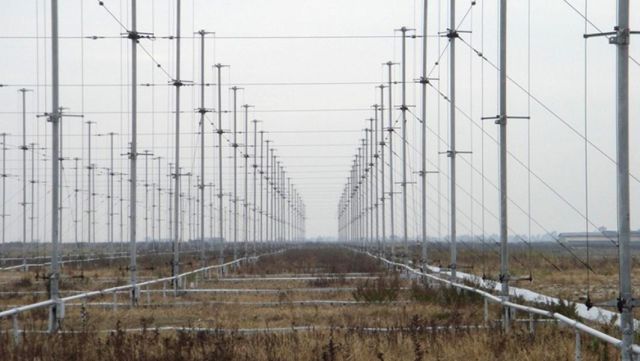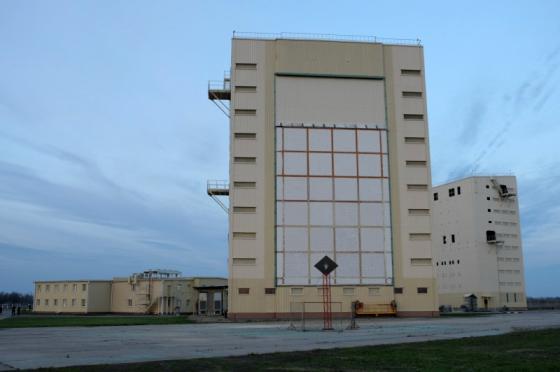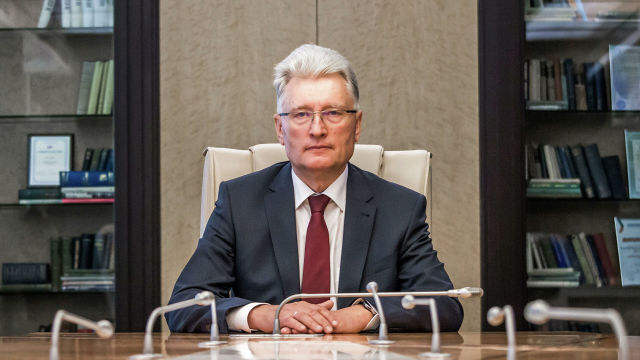JSC "Radio Engineering Institute named after Academician A.L. Mints" (RTI) and JSC "NPC "NIIDAR" (NIIDAR) — leaders in the field of creating complex radio engineering systems. Specialists of the institutes create both separate equipment and complex radar stations (radars) and hardware and software complexes. The radars designed at RTI and NIIDAR play a huge role in Russia's security, tracking missiles, planes and ships of a potential enemy literally anywhere in the world. However, the institute also has high-tech civilian projects.
In an interview with TASS, Yuri Anoshko, Director General of RTI and NIIDAR, reported on the monitoring system being created with elements of artificial intelligence, which will allow monitoring the situation in the Black Sea, foresee and prevent provocations of NATO ships in this region. In addition, he spoke about the prospects of radiophotonics, the modernization of radar stations of the missile attack warning system (SPRN) and the creation of equipment for underground radar surveys from the air and from space.
— Yuri Gennadievich, the Black Sea direction is especially relevant now, there are many events taking place there, which Russia needs to closely monitor. Is RTI working on new radar complexes for monitoring the Black Sea?
— Taking into account the latest trends in increasing the presence of NATO ships and aircraft in the Black Sea and increasing ship traffic in the region as a whole, along with primary radar tasks to detect unfriendly ships and aircraft, there is a need for global monitoring of the situation in the entire Black Sea region.
At the moment, the Research Institute of Long-Range Radio Communications (NIIDAR) is developing a full-size layout of an information system that will be able to solve the problem of lighting the situation in the near and far sea zone of the Black Sea. It is a scalable software and hardware platform that will allow monitoring the marine situation in real time. Receiving data from various open and closed sources, as well as heterogeneous technical means, the system automatically processes object information and forms an actual target situation in the selected region. At the same time, it continuously maintains its own database of object information, which makes it possible to apply a retrospective analysis, form and refine a statistical model of the normal shipping situation.
 |
| Russian radar "Sunflower-E". |
| Source: Photo: NIIDAR/niidar.ru |
Applying machine learning algorithms and artificial intelligence elements in further processing, the system will allow detecting deviations from the normal situation, detecting and accompanying potentially dangerous objects and automatically issuing appropriate notifications to military authorities. Given the local nature of modern military conflicts and frequent provocations by NATO ships, the use of such a system becomes necessary to predict and prevent such situations.
As for the radar complexes, a Sunflower-type complex can perfectly suit to cover the water area of our state. If the general customer is interested and formal procedures are carried out, we are, in principle, ready to start its manufacture and delivery. If we talk about the time frame, then if certain agreements are concluded within six months, it is possible to start manufacturing this complex and carrying out preparatory work for its subsequent installation. The locations of the proposed deployment on the Black Sea coast have already been determined, both on the Caucasian and on the Crimean coast.
— You started talking about the Sunflower radar. Are foreign customers interested in the export version of this Sunflower-E station?
— I can say that there is a real interest in Sunflower-E and Laguna-I, now we are actively working with potential customers.
With firm orders, everything is not so fast and simple. It should be understood that the preparation of a serious contract for the supply of even one system has been going on for more than one year. The contract is being developed for about three years, this includes visits of our employees for reconnaissance work, coordination with customers of technical characteristics, dislocation and final cost of each product.
— Earlier it was reported that a project is being prepared to modernize the radar stations of the Russian missile attack warning system (SPRN)? What new products will be introduced? Will we see an artificial intelligence radar?
— A new series of locators has recently been put on alert. However, it is not for nothing that when designing them, the possibility of modernization, flexible increase in characteristics is laid down. The fact is that the "probable enemy" is constantly working to increase the capabilities of its means of attack, and even civil and military programs for the development of near-Earth space literally litter space, complicate the target situation in the area of responsibility of our radars. Therefore, when completing the program to create a closed field of SPRN, the customer and the developers have already formed a forecast of its development, and with a solid margin.
What you call "novelties" are already being applied here now. But we must understand that artificial intelligence in the nuclear deterrent system is dangerous, the movie of your childhood "Terminator" is just about that.
Yes, the modernization project is being prepared. Its main task is to increase the characteristics of the SPRN radar in advance in accordance with the prospective target situation.
— Today Russia is actively developing the Arctic region. RTI is working on new solutions for the Arctic: maybe communication systems, radars, complexes for aircraft or drones?
— Our company has developed and manufactures several types of hardware and software systems for monitoring the ionosphere, operating on various scientific and technical principles. We use them comprehensively, including in over-the-horizon locations. The circumpolar ionosphere is a very active region of the Earth's gas envelope, which has a noticeable effect on the operation of communications and other communications beyond the Arctic Circle. In order to ensure reliable and stable communication, trouble-free operation of many electronic devices, navigation systems, it is necessary to continuously monitor the ionosphere, adjust their operating modes in a timely manner.
Our hardware and software complexes are the only ones in the country that have military acceptance, designed both for scientific research and to ensure the reliable functioning of information exchange systems, including in the Arctic region.
— Radiophotonics is now a promising direction in radar. What is being done by RTI in the framework of work on radiophotonics?
— First of all, what do we mean by the term "radiophotonics"? Usually, radiophotonics is understood as the use of optical information transfer devices — fiber paths and their nodes, data transfer devices from the radio frequency range to the optical one. It's more like optoelectronics.
 |
| Radar SPRN 77YA6-DM "Voronezh-DM" in Armavir. Source: www.rtisystems.ru . |
Our area of interest in optical devices is computing devices, processors that use light as a carrier of information. This is a separate, specific direction of radiophotonics. Therefore, today we are faced with the task of transferring information flows from the radio frequency range to the optical one.
The use of integrated radiophoton nodes technology in our radars will multiply the volume of transmitted information, the bandwidth of signals and the bandwidth of analysis of radio frequency spectra, and will qualitatively affect the speed of information processing. The transition to the optical range will also solve the issues of electromagnetic compatibility with an increase in the installation density, noise immunity from external radiation, will reduce the heat generation of signal processing devices (processors), thereby solving the problem of limiting the growth of their performance due to overheating of semiconductor elements. The widespread use of integrated photonic circuits and information transmission paths will reduce the volume and weight of the equipment of products by at least a hundred times.
— RTI specialists are developing a unique ELIK locator for Earth remote sensing satellites. At what stage is this project now?
— This year, ground tests of the on-board radar complex (BRLK) of the L-band were carried out with the development of the control mode of the BRLK using the information and command radio line.
Today we are actively preparing for flight tests of the R-band BRLC in order to test the possibility of underground radar survey of the area. Also, together with other interested organizations, RTI implements projects for the creation and testing of promising automated systems for monitoring the Earth's surface of air/space-based, and also offers justifications for the directions of their further application.
— At the Army-2021 forum, RTI presented a complex of non-stop and covert inspection. Specialists of the Institute are modernizing the complex? Have the functions of identifying people and measuring their temperature been added? Are there already customers for this complex?
— We have gone much further than the function of identifying people. We have developed basic tools for profiling people based on their network activity on the platforms TikTok, Youtube, Vkontakte, Facebook, Yandex and other services.
The system allows you to create a profile of a person and assess the degree of threat to people by a set of characteristic features during the passage through the inspection complex. In addition to the profiling system, a system for recognizing microexpressions of the face and gait will be introduced into the complex of non-stop covert inspection for reliable and early identification of potential threats to society. The temperature measurement function will be implemented immediately after the delivery of components at this difficult time for the country and the world.
As for the customers, the law enforcement agencies have already contacted us with an order for a certain number of inspection complexes. The system of profiling people among law enforcement agencies and large companies also aroused great interest.
Due to serious restrictions, the demonstration to foreign customers had to be postponed, but interest in the inspection complex and the systems included in it is growing quite intensively.
Milena Sineva was talking

